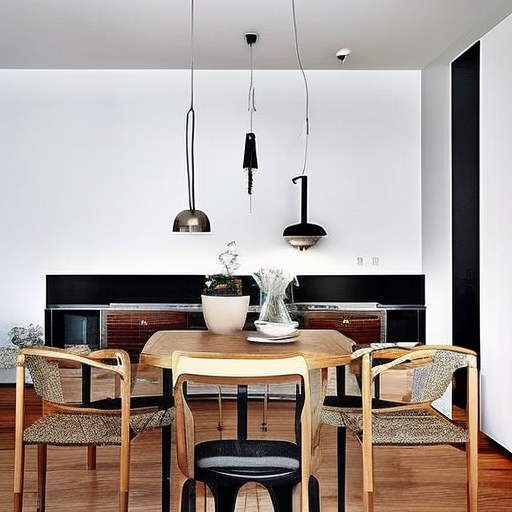Summary:
Scandinavian design is a design movement that emerged in the mid-20th century in the Nordic countries of Denmark, Finland, Iceland, Norway, and Sweden. It is characterized by simplicity, minimalism, functionality, and a focus on natural materials. Scandinavian design has had a significant influence on the fields of furniture design, architecture, and interior design, and continues to be highly regarded for its timeless and practical aesthetic.
Origins and Influences
Scandinavian design emerged in the 1950s as a response to the economic and social changes that occurred after World War II. The movement was heavily influenced by the Bauhaus school of design, which emphasized the integration of art, craft, and technology. The Scandinavian designers sought to create functional and affordable products that could be mass-produced, while still maintaining a high level of craftsmanship and quality.
Key Principles
Scandinavian design is characterized by several key principles. First and foremost is simplicity. Designs are stripped down to their essential elements, with unnecessary ornamentation and embellishment avoided. This simplicity is complemented by a focus on functionality. Scandinavian designers prioritize the usability and practicality of their creations, ensuring that they serve a purpose and are user-friendly.
Another important principle of Scandinavian design is minimalism. Spaces and objects are kept clean and uncluttered, with a preference for open floor plans and light-filled interiors. This minimalistic approach creates a sense of calm and tranquility, allowing the user to focus on the beauty of the design itself.
Natural materials are also a hallmark of Scandinavian design. Wood, in particular, is highly valued for its warmth and durability. Other materials commonly used include leather, wool, and natural fibers. These materials not only contribute to the aesthetic appeal of the design, but also reflect the region’s close connection to nature.
Impact and Legacy
Scandinavian design has had a profound impact on the fields of furniture design, architecture, and interior design. The clean lines, functionalism, and use of natural materials have become synonymous with the Scandinavian aesthetic. Many iconic furniture pieces, such as the Egg Chair by Arne Jacobsen and the Paimio Chair by Alvar Aalto, have become timeless classics and are still highly sought after today.
The influence of Scandinavian design can also be seen in the architecture of the region. Many Scandinavian architects, such as Alvar Aalto and Jørn Utzon, have gained international recognition for their innovative and human-centered designs. Their buildings often incorporate elements of nature and prioritize the well-being of the occupants.
In addition to its impact on design fields, Scandinavian design has also influenced popular culture and everyday life. The concept of “hygge,” which refers to a feeling of coziness and contentment, has gained popularity worldwide and is closely associated with Scandinavian design. The emphasis on simplicity, functionality, and natural materials has resonated with people seeking a more mindful and sustainable lifestyle.
In conclusion, Scandinavian design is a design movement that emerged in the mid-20th century in the Nordic countries. It is characterized by simplicity, minimalism, functionality, and a focus on natural materials. Scandinavian design has had a significant influence on furniture design, architecture, and interior design, and continues to be highly regarded for its timeless and practical aesthetic.












